All about epoxy floors: much more than industrial flooring
Epoxy floors are a continuous flooring that offers countless benefits that go far beyond its quick and easy application. It is a versatile material that allows professionals to renovate all kinds of spaces without the need for building work and debris along the way. It is a covering that does not require expansion joints and is therefore laid on top of the existing flooring.
This added value is highly appreciated in large areas such as industrial warehouses or car parks, some of the spaces where it is most widely used. Places that require materials that facilitate the renovation of considerable dimensions in the shortest possible time and that also guarantee unbeatable benefits. Two factors that an epoxy resin floor fulfils to perfection.
Although the epoxy floor is originally an industrial and commercial floor covering, the exponential increase in its use in homes over the last few years and in offices is proof of its enormous decorative possibilities. An integration that has been gradually developing thanks to the variety of its finishes and colours, as well as its magnificent chemical resistance.
But what exactly is an epoxy resin floor? Here we give you the keys to a continuous flooring with enormous possibilities and excellent technical features.
What is an epoxy floor?
Epoxy resin is a material that makes it possible to create continuous floors with a wide variety of finishes. These floors are also known as continuous polymeric coatings which common denominator is their durability, shine and superior chemical resistance compared to other coatings on the market.
The epoxy floor is made of a thermosetting polymer that reacts and hardens when mixed with a catalyst agent. This composition is responsible for its durability, impermeability and resistance to abrasion, which are some of its most outstanding features.
A paving that does not deform with heat and that stands out from other coatings for its greater hardness as well as for offering a non-slip finish.
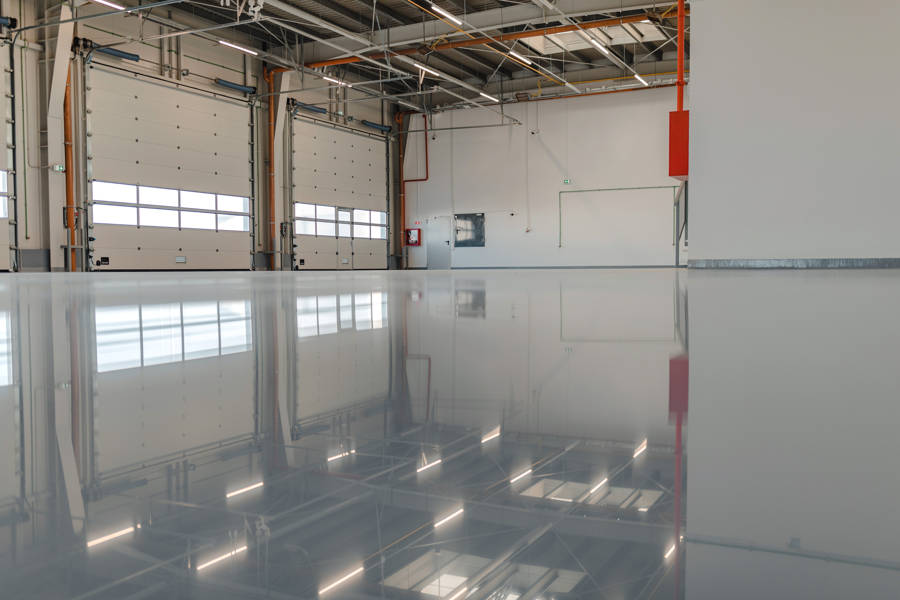
Epoxy floor characteristics: main advantages and disadvantages
Epoxy floor has significant benefits, but also some drawbacks. Factors that must be evaluated to determine whether or not it is the type of flooring you are looking for and whether or not it suits your needs and preferences. Here are the main ones:
The resistance of epoxy floor is superior to other floor coverings.
Epoxy floors offer a high resistance to corrosion, abrasion and traffic wear without suffering any type of damage. It is precisely because of this substrate capacity that it is used in car parks for vehicles and heavy machinery, laboratories, warehouses, etc. In addition, epoxy floors can be exposed for long periods of time to chemical agents without affecting their properties.
Epoxy floor is applied over existing floors
With an epoxy floor, any space can be revitalised without removing the existing substrate. As there is no need for building work, no debris is generated and therefore the renovation can be carried out in a shorter period of time than with other coatings, with the consequent advantage that labour is also reduced.
In this sense, the epoxy resin floor can be installed on ceramic and concrete floors, among others. A quick and easy application, although it requires a professional to carry it out correctly.
Smooth, continuous finish thanks to the epoxy floor
With the epoxy resin floor, a continuous and smooth finish is created effortlessly, as the thickness of this type of flooring is reduced. A feature that visually maximises spaces, especially those of smaller dimensions. Hardly any thickness is added to the new flooring, so the structural load is not affected at all.
The drying time of an epoxy floor is short.
Every floor is different. Not all floor types offer the same strength, execution and curing time. A transcendental factor on which the speed of installation depends and, consequently, the choice of one type or another to tackle a particular project due to its requirements.
In this regard, the epoxy floor stands out for its short drying time compared to other alternatives on the market. Its drying time is approximately 8 hours and, if you choose this paving system, you will be able to walk on it after only 24 hours.
The epoxy floor is free of solvents.
In the construction and decoration sector, many of the materials used for flooring are made up of components that contain solvents. Solvents that give off strong odours during installation. This is not the case with an epoxy resin floor, as its formula does not include solvents and therefore its installation is more pleasant and easier.
The installation of an epoxy floor requires skilled labour.
Although the previous paragraphs have detailed the quick and easy application of an epoxy floor, it is also true that its installation can only be carried out by skilled labour. Experienced professionals are the only way to do a job that avoids problems in the future.
Excessive moisture, a visible problem on an epoxy floor
It is just as important to remove any traces of dust and dirt from the existing floor as it is to ensure that there is not too much moisture in the substrate before applying the epoxy system. Excessive moisture can lead to problems in the bonding of the existing floor with the new epoxy floor. The result would be a noticeably weaker bond or the bond would be impossible to achieve at all. So be careful.
Incorrect priming, a setback for the future epoxy floor
An epoxy floor has many similarities to paint, starting with the fact that it develops into a liquid form and, over time, becomes a solid coating. As with paint, it is very important to get the right primer for an epoxy floor. Using a primer that is not compatible or not used at all will cause adhesion problems between the floorings.
A primer is a determining factor in epoxy floors, as they are commercial and industrial floors that suffer from continuous wear and tear.
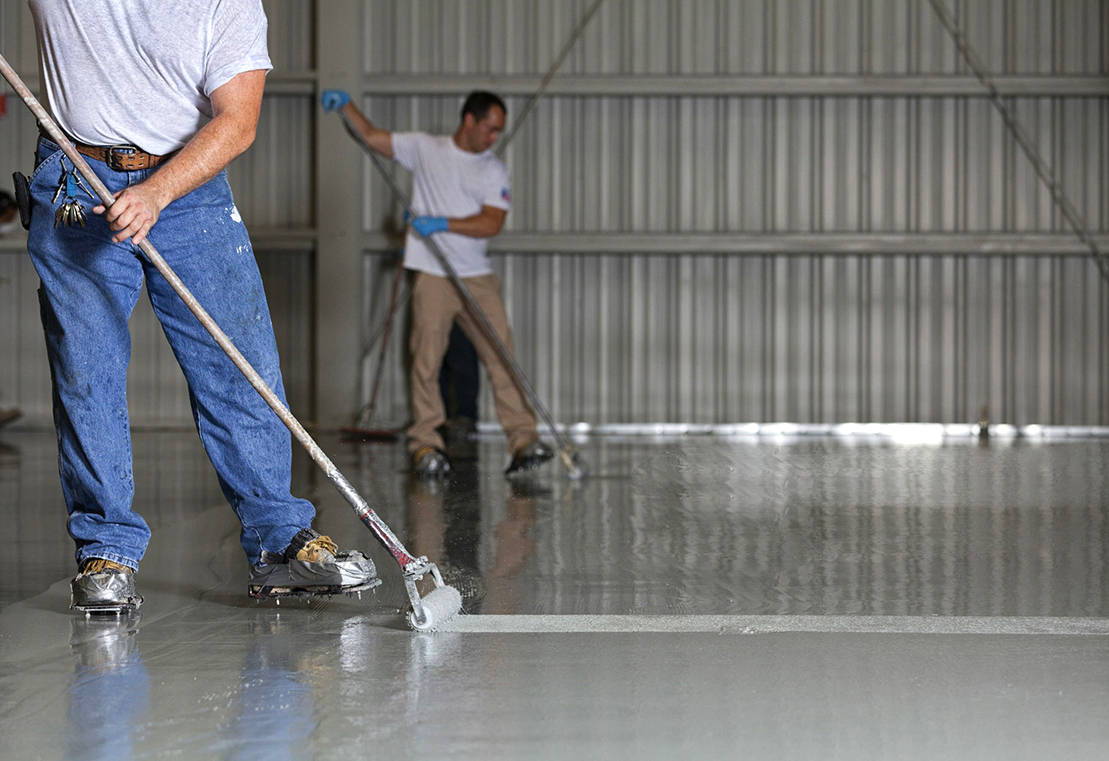
The versatility of epoxy floors: up to 5 different types
As mentioned above, the epoxy floor is characterised by the variety of finishes available to the professional. And although all the systems that can be obtained from this resin are mistakenly called epoxy floors, it is important to know how to differentiate between them.
1. Self levelling epoxy floors
Self-levelling floors are undoubtedly the best known of the epoxy floor family. They are mainly used as flooring in industrial areas due to their high mechanical and chemical resistance. Generally, the finishes are coloured.
Within the family of self-levelling epoxy resin floors, there are two other subtypes depending on their thickness. On the one hand, 1mm, which are usually applied on concrete in good condition, self-levelling mortars or similar to ensure greater protection. Their finishes are smooth and shiny.
On the other hand, there are self-levelling epoxy floors with a thickness of more than 2 mm. This variety is more suitable for surfaces that present some kind of irregularity or smooth surfaces where greater durability is sought. This is the system most commonly used in decoration.
2. Epoxy floors or multi-layer systems
Multi-layer systems are epoxy floors with anti-slip finishes and an average thickness of 2 mm per saturated layer. For decorative finishes, coloured quartz is used.
These are applications of alternating layers of primer and epoxy paint, where a dusting or also called aggregate spreading is carried out in order to obtain rough, slip-resistant surfaces. In the case of using coloured quartz and transparent resins, the resulting decorative floors are of high quality.
3. 3D, vinyl or artistic epoxy floors
This epoxy floor is achieved by pouring a self-levelling transparent epoxy over a vinyl. The result is a glass effect and the creation of a fixed image on the floor, which is fully protected by a layer of epoxy glass.
4. Epoxy microcement
If there is a coating that can and does overshadow the epoxy resin floor, it is microcement. A decorative continuous coating with great functionality, thanks to its extraordinary features, together with impressive decorative finishes. So why choose when you can have the best of each system in the same product?
Industtrial, our epoxy microcement combines the finishes of microcement with the hardness, high chemical resistance and impermeability of the epoxy resin floor. And it is available in 16 colours.
5. Epoxy paints, the most traditional and economical system
And last but not least, epoxy paints. One of the systems that generates the most confusion and is labelled as epoxy floor when it is not exactly the same thing.
Epoxy paint is the brightly coloured and sometimes even extravagant floor covering that is widespread in car parks and industrial warehouse floors. Among its special features are its average thickness of 0.2 to 0.4 mm, the fact that it is primed and its high resistance to forklift and vehicle traffic.
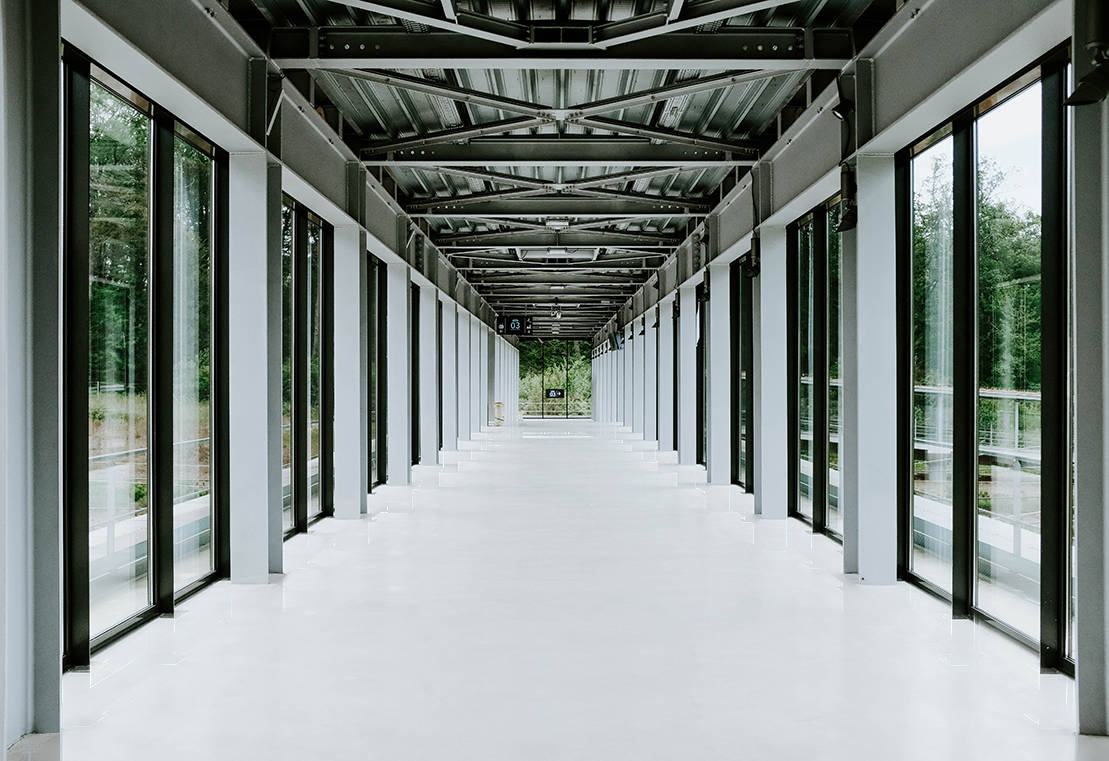
Where is an epoxy floor installed? Most common uses
An epoxy floor can be installed on almost any surface. Its low thickness allows for very fast maintenance. However, there are some places where it is used more frequently than others. The following are the main areas where this continuous flooring can be found.
- Due to sanitary requirements, the epoxy floor is very well considered as flooring in food companies as well as kitchens. Likewise, it is very common in pharmaceutical laboratories and hospital plants.
- The epoxy resin floor is also highly appreciated for its chemical protection. In this respect, it is a floor covering that is constantly used in food companies that are exposed on a daily basis to spillage of fruit juices, lactic acid, blood, etc. This protection extends to spillage of aggressive liquids, which is why the epoxy floor is ideal for laboratories and warehouses.
- The clean, aseptic aesthetics of an epoxy floor have boosted its use in automotive workshops, car parks and garages. As well as any type of factory or warehouse in general.
- The aesthetic perspective should not be lost, as an epoxy resin floor is still a decorative coating despite being more introduced in the industrial field. An epoxy floor that is perfect for offices, commercial premises and homes.
Epoxy floor price: how much does it cost per square metre?
The price of an epoxy floor varies depending on the system chosen. For example, it will be much cheaper to coat a floor with epoxy paint than with a 3D or vinyl floor. While the cost of the former can be around 8-10 euros per square metre, the latter rises considerably to a minimum of 100 euros. Other systems are around 35-40 euros per square metre.
In short, the price per square metre of an epoxy floor is influenced by the following factors:
1. The quality of the material as well as the chosen epoxy floor system.
2. Whether the substrate needs to be repaired before the epoxy resin is poured. The substrate needs to be assessed very carefully because if intervention is necessary, labour will be more expensive.
3. The size of the space is one of the most important determinants of the price of an epoxy floor. It is not at all the same to cover a small office as it is to cover a larger warehouse or factory.
4. Although it may seem obvious, the tools used also influence the cost of an epoxy floor.
5. The consultation and price of the professional, who ultimately decides the final cost.
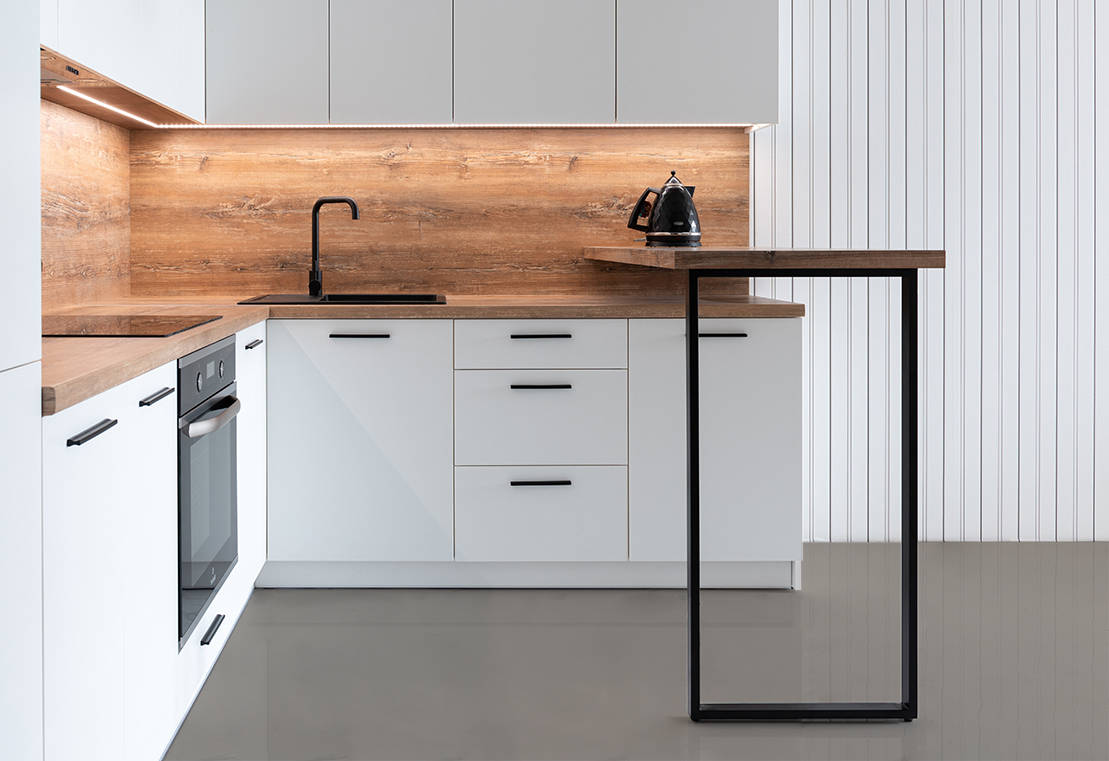
Why to use epoxy resin for wood?
You've probably noticed those original wooden furniture and floors encapsulated in epoxy resin. If you like this decorative breakthrough finish and are wondering how to do it, you're in the right place.
We develop the essential qualities of epoxy resin for wood. Pay attention!
- Epoxy resin for wood protects and waterproofs the substrate, preventing the appearance of woodworm and humidity.
- The epoxy resin polishes the wood, giving the floor a glass-like appearance.
- Wood can be laminated, varnished and encapsulated thanks to the epoxy resin. Any creation and decorative finish is possible.
Which epoxy resin for wood is the most recommended?
Most commercially available epoxy resins for wood can be applied as a varnish. This is due to their excellent self-levelling, protective and pigmenting properties.
However, when using an epoxy resin in thick layers for encapsulating the wood floor, experts agree that it is best to choose a low viscosity resin. Why is that? Because this type of resin releases the bubbles more easily to the surface and, as a result, the transparency achieved is perfect.
Tips for applying epoxy resin to wood correctly
Whether you want to apply epoxy resin on a wooden floor or on a piece of furniture to completely change its appearance, there are a number of tips to keep in mind to make them shine.
There are two techniques to use in the process. On the one hand varnishing, on the other encapsulation. In both cases the epoxy resin for wood has to be prepared in the same way. Pay attention.
- Make sure that the tools to be used are dry and clean: containers, spatulas, etc.
- Follow the instructions stipulated in the technical data sheets of each manufacturer. The recommended amount of epoxy wood resin and catalyst must be weighed correctly.
- Add pigment or dye (if desired) to colour the wood while stirring the epoxy resin.
- Vigorously mix the two components together.
- Keep an eye on the curing or hardening time. The mixture will start to harden after approximately 30 minutes, depending on the epoxy wood resin chosen. You should limit yourself to this period to work with it before it catalyses.
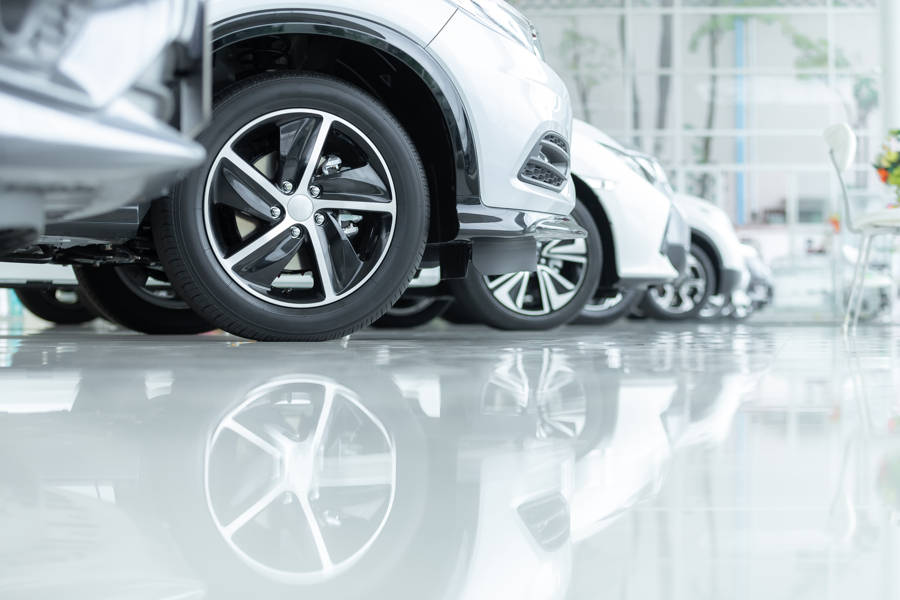
Five reasons to opt for an epoxy floor at home
It has been made quite clear that due to the particularities of epoxy floors, they are floors that are used in the industrial and commercial sectors. Now, the time has come to explain the reasons why their use in homes has skyrocketed recently. There are five main reasons for the epoxy floor boom at home.
1. The innovative aesthetics of the epoxy floor
The versatility of the epoxy floor allows all kinds of designs and patterns to be created on the floor, as well as being able to choose from a large number of colours and textures according to the customer's preferences. A completely adaptable design with a novel aesthetic that allows you to personalise environments quickly and easily.
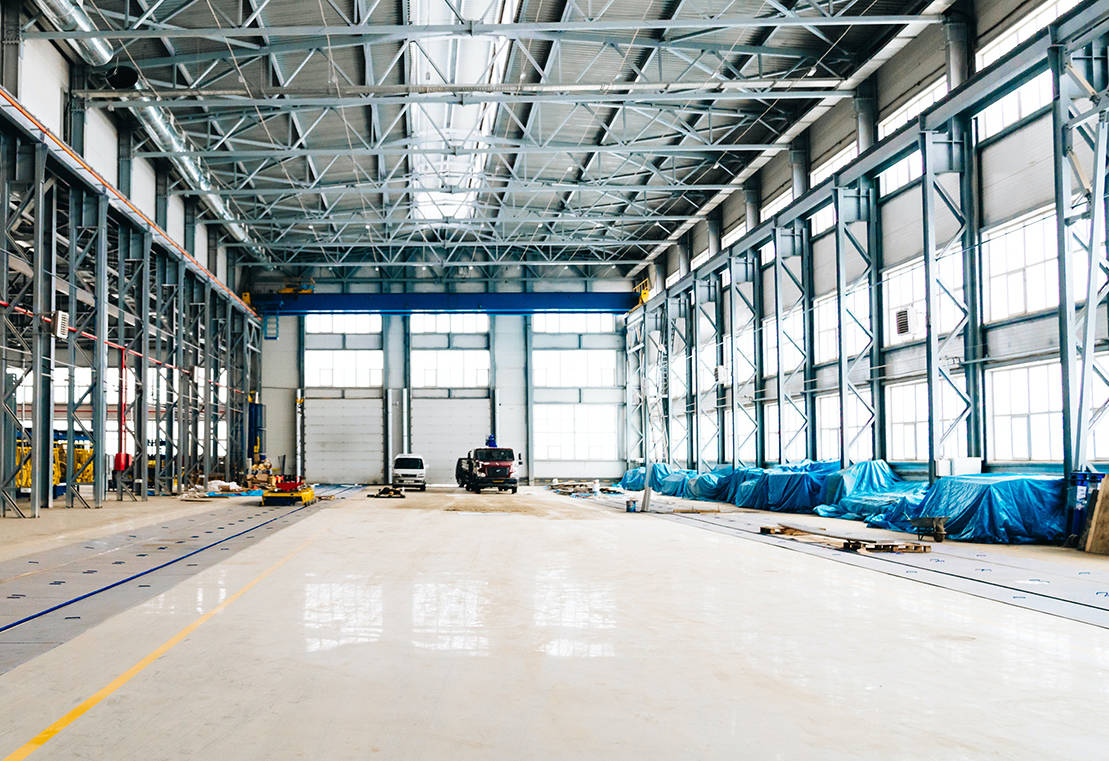
2. The great compatibility of the epoxy floor: all facilities
The epoxy floor can be applied on a multitude of materials without any building work, directly on the existing floor. It is compatible with tiles, concrete and terrazzo, some of the most common materials in the home.
This versatility favours the use of the epoxy floor in the home, because it is not necessary to use heavy machinery to remove the existing floor. Less work and less cost! If you are one of those who like to take risks with designs and you have a staircase that is no longer fashionable, with this material you can cover it and promote the sensation of continuity by unifying the floor and stairs. A 2 in 1 in all rules!
3. 100% waterproof, the great value of the epoxy floor
Not all floor coverings are resistant to humidity and impermeable to water. Some can alleviate this handicap with the use of varnishes and sealants, others not even that. A problem you don't have to worry about because epoxy floors are perfectly at home in damp environments.
The epoxy resin layer applied to the floor is waterproof, making it ideal for rooms such as bathrooms and kitchens. Two of the areas of the home that most require renovation.
4. The epoxy floor is anti-slip
Linked to its impermeability is its non-slip character. Kitchens and bathrooms, especially the latter, are prone to slips and falls. This is why epoxy floors in the home are becoming so popular, not only because of their characteristic high gloss.
5. Cleaning and maintenance reduced to a minimum
Damp cloth, water and mild detergent. That's all you need for routine cleaning of the epoxy floor in the home. The absence of joints is the best guarantee of maximum hygiene, as bacteria, fungi and mould do not proliferate.
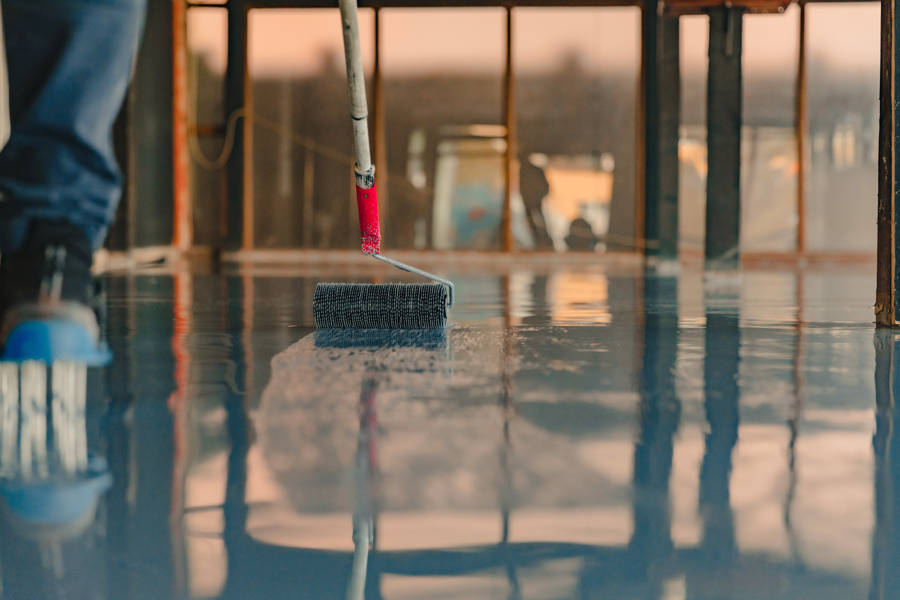
Epoxy floor on the outside? Yes, but with nuances
Yellowing is one of the main disadvantages of using an epoxy floor outdoors, as it is a floor that is sensitive to the sun's rays and the weather. Hence, it is predominantly used as a continuous indoor floor covering and is not very popular for outdoor use.
However, this does not mean that it cannot be used in any way. With the right treatment, the handicap of yellowing can be overcome and an epoxy resin floor can be used outdoors. If you are convinced to use this flooring for terraces, pay attention.
How to seal the epoxy floor for outdoor application
To apply epoxy floor outdoors, it is essential to seal it with at least one layer of polyurethane. Although many professionals even recommend two coats as a preventive measure after applying another coat of epoxy primer. In this way, we obtain a pavement of higher quality and resistance to abrasion, and terraces can be covered.
As for the polyurethane with which the exterior epoxy resin floor is to be sealed, it must be aliphatic. 100% solid polyurethanes do not solve the problem of yellowing.
Subscribe to our newsletter
Receive in your email tips for the application and care of microcement, the latest trends and news about Topciment products.




